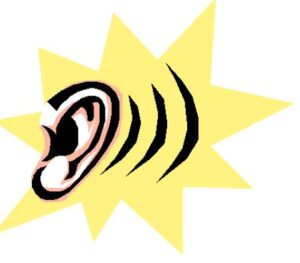 There are two types of listening.
There are two types of listening.
The first is the most common: listening to respond. You know this. You can see the person you’re speaking with is just waiting for you to take a breath, so she can tell you something. (Often a story that one-ups yours.)
The second is more valuable: listening for understanding and empathy. You are paying attention to information and feelings to get a better sense of what’s happening with this person.
Neuroscience backs up your intuition: that the second way works better when you’re trying to create rapport and lead change.
Truly Active Listening
We all believe we’re good at active listening. But then most of the people in the world believe they’re above average, too.
Start paying attention when you’re in listening mode to see how well you do with this checklist:
- Listen without interruption—and without letting your mind wander off
- Paraphrase what the person said, using his words not yours, to make sure you understand him
- Ask questions that relate to what he’s saying, to draw out new ideas and continue to clarify what you heard
- Use body language that mirrors his, but is just a bit more open and relaxed
- Avoid giving advice
(Here’s a convenient one-page list of my top 10 active listening techniques.)
Leaders who master these techniques change the brains of—and the outcomes for—their people.
Light Up Some Brains
In one study, participants talked about important life experiences with an evaluator. People noticed when their evaluator used active listening. They gave these folks higher skill ratings and felt more positive about them.
Researchers also used fMRI (functional MRI scans) to see what was happening in participants’ brains. (This measures brain activity: parts of the brain “light up” because they’re using more glucose, indicating they’re working harder.)
Those with an active listening partner had the reward centers of their brains light up, including the ventral striatum. This usually is engaged when people are being rewarded by money or doing something they enjoy.
In addition, their right anterior insula, involved in evaluating positive emotions, showed more activity.
You Listen: Everyone Benefits
Research on active listening in coaching sessions also shows people are more likely to recall and use what they learned. That’s because those who believe others are listening to them tend to remember more about the experience.
Active listening can actually change a person’s view of something in the past. People who shared a negative experience with an active listener were better able to reframe what happened to them in a more positive way.
As a leader, that’s a real boon for dealing with chronic complainers, and those who are stuck in a past upset or difficulty.
A Non-Traditional Holiday Gift
Give your people—current or potential clients, colleagues, employees, those you report to, and family and friends—the gift of your interest and empathy.
Use active listening to start building or deepening your connection with them. This could be the least expensive and most valuable thing you give them for the holidays.
Ready to discover more ways to effectively lead others by building rapport? Let’s talk.
